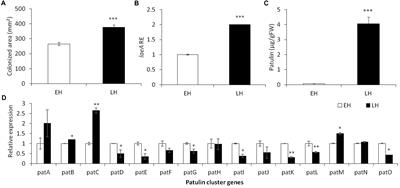EDITORIAL
Published on 24 Mar 2020
Editorial: Interplay Between Fungal Pathogens and Fruit Ripening
doi 10.3389/fpls.2020.00275
- 1,876 views
- 1 citation
12k
Total downloads
55k
Total views and downloads
You will be redirected to our submission process.
EDITORIAL
Published on 24 Mar 2020
ORIGINAL RESEARCH
Published on 30 Jan 2020
ORIGINAL RESEARCH
Published on 18 Sep 2019
ORIGINAL RESEARCH
Published on 10 Sep 2019
ORIGINAL RESEARCH
Published on 18 Apr 2019

ORIGINAL RESEARCH
Published on 01 Mar 2019

ORIGINAL RESEARCH
Published on 27 Jul 2018

